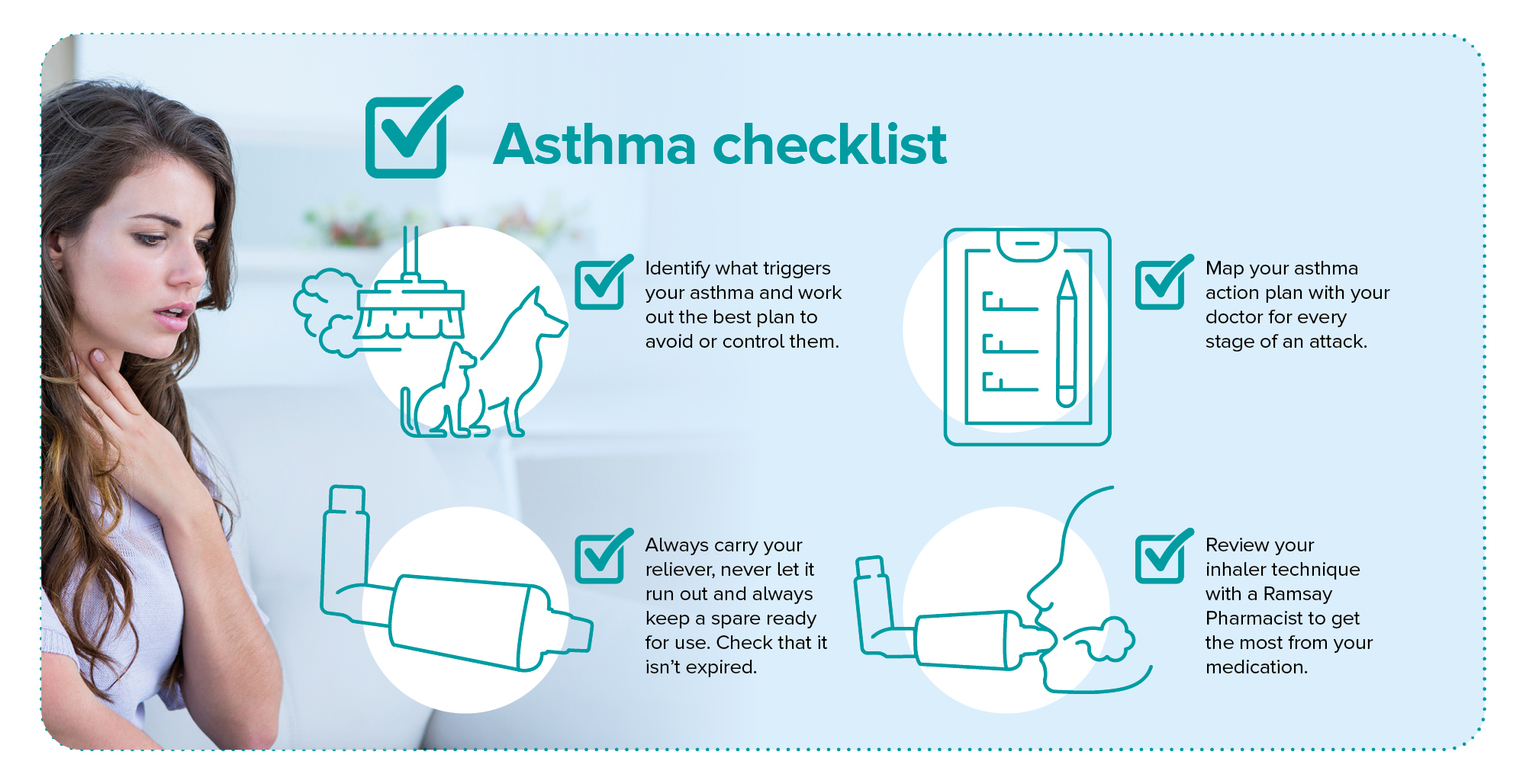Asthma affects 2.7 million Australians and about 80% of people with asthma also suffer from hay fever.
Asthma is an inflammatory condition of the airways and is also associated with hay fever (seasonal allergic rhinitis). There is often a family history of asthma, eczema and hay fever - this is known as ‘atopy’.
Certain things can trigger asthma symptoms, making it harder for you to breathe. Symptoms can include feeling breathless, wheezing, chest tightness and a persistent cough, particularly at night, early in the morning or with exercise or after activity. It’s important to identity what triggers your asthma to help you prepare. Managing hay fever and allergy as part of your asthma care can also help control asthma flare ups.
Around 90% of Australians do not use their inhaler correctly – and about three quarters of them don’t realise it. The right inhaler technique is extremely important so here are our tips to achieve better delivery of your asthma medication for commonly used asthma reliever inhalers such as Ventolin® and Asmol®;
- Use a spacer. Spacers slow down the speed of the medicine particles that leave the inhaler so they end up in your lungs where they are needed, rather than the back of your throat. The corticosteroid medicine found in most preventers can cause fungal infections such as oral thrush if medicine particles are deposited on the back of the throat, so technique is very important – and that includes using a spacer. Using a spacer can also help people with poor hand strength who may struggle to fire and release the inhaler medicine at the right time, improve inhaler effectiveness.
- Fire only one puff per breath. This applies whether or not a spacer is used. Firing multiple puffs results in far less medicine reaching the lungs than if you were to use one puff only per deep breath.
- Hold your breath for about 5 seconds after inhaling deeply. This helps to ensure the medicine has time to settle in the lungs so it can work. Breathe out through your nose.
- Wash your spacer out once a month, and after you have recovered from a cold or flu. Use normal dishwashing detergent solution, and allow it to air-dry (do not rinse). Also, don’t towel-dry your spacer after cleaning. This creates a static electricity charge on the walls of the spacer, and medicine particles tend to stick to the spacer rather than going into your lungs.
- Replace your spacer regularly. Spacers, like any device, can degrade over time and the valves can start to leak. If you are unsure, talk with your Malouf Pharmacist who can check over your spacer. It is recommended to at least check, if not replace, your spacer after 12 months.

With the right advice, support and medicines it’s possible to manage the severity and frequency of asthma. Schedule a free 15 minute one-on-one Asthma Check with your Malouf Pharmacist to check whether your asthma control can be improved, check your asthma inhaler technique and receive advice to better manage your flare ups.
Click here to find your closest store or click the links below to make a booking.